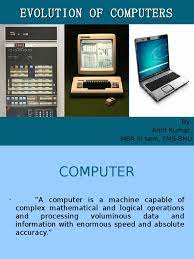
The Evolution of Computer Hardware
Computer hardware has undergone remarkable evolution since the advent of the first electronic computers in the mid-20th century. From room-sized machines with limited processing power to today’s sleek and powerful devices, the journey of computer hardware has been nothing short of revolutionary.
Early computers relied on vacuum tubes and magnetic drums for memory storage, paving the way for advancements such as transistors and integrated circuits. The development of microprocessors in the 1970s marked a significant milestone, leading to the creation of personal computers that could fit on a desk.
As technology continued to advance, computer hardware became smaller, faster, and more efficient. The introduction of graphical user interfaces, storage devices like hard drives and solid-state drives, and networking capabilities further transformed the capabilities of computers.
Today, we have a wide range of computer hardware options available, from desktops and laptops to smartphones and tablets. The evolution of computer hardware has enabled us to perform complex tasks with ease, connect with others around the world, and access vast amounts of information at our fingertips.
Looking ahead, the evolution of computer hardware shows no signs of slowing down. Emerging technologies such as quantum computing and artificial intelligence promise to push the boundaries of what is possible with computer hardware, opening up new frontiers in computing.
As we reflect on how far computer hardware has come, it is clear that its evolution has been instrumental in shaping the modern world. From enhancing productivity to enabling innovation in various fields, computer hardware continues to play a crucial role in our lives.
Advancements in Computing: A Guide to the Evolution of Computer Hardware
- Stay updated on the latest advancements in computer hardware technology.
- Understand the historical milestones that have shaped the evolution of computer hardware.
- Explore different types of computer hardware components and their functions.
- Learn about Moore’s Law and its impact on the development of computer hardware.
- Follow reputable sources and research papers to deepen your knowledge of computer hardware evolution.
Stay updated on the latest advancements in computer hardware technology.
To stay ahead in the ever-evolving world of computer hardware technology, it is crucial to stay updated on the latest advancements. By keeping abreast of new developments, you can ensure that you are leveraging the most cutting-edge hardware to enhance your computing experience. Whether it’s faster processors, increased storage capacity, or innovative design features, staying informed about the latest trends in computer hardware technology can help you make informed decisions and maximize the potential of your devices.
Understand the historical milestones that have shaped the evolution of computer hardware.
To grasp the significance of the evolution of computer hardware, it is essential to delve into the historical milestones that have profoundly influenced its development. By understanding key moments in the history of computer hardware, such as the invention of transistors, microprocessors, and storage devices, we can appreciate how these advancements have paved the way for the sophisticated technology we rely on today. Each milestone represents a crucial step forward in the evolution of computer hardware, highlighting the continuous innovation and progress that have shaped the computing landscape over time.
Explore different types of computer hardware components and their functions.
To delve into the evolution of computer hardware, it is essential to explore the diverse array of computer hardware components and their respective functions. From processors and memory modules to storage devices and graphics cards, each component plays a critical role in the overall performance and capabilities of a computer system. Understanding how these components work together to process data, store information, and facilitate communication can provide valuable insights into the advancements that have shaped the evolution of computer hardware over the years.
Learn about Moore’s Law and its impact on the development of computer hardware.
Understanding Moore’s Law is essential when exploring the evolution of computer hardware. Coined by Gordon Moore in 1965, this observation predicted that the number of transistors on a microchip would double approximately every two years, leading to exponential growth in computing power. Moore’s Law has had a profound impact on the development of computer hardware, driving innovation and pushing manufacturers to continually improve performance while reducing costs. By learning about Moore’s Law, one can gain valuable insight into the rapid advancements that have shaped the modern computing landscape.
Follow reputable sources and research papers to deepen your knowledge of computer hardware evolution.
To deepen your understanding of the evolution of computer hardware, it is essential to follow reputable sources and research papers. By consulting established sources and academic publications, you can gain valuable insights into the historical development, technological advancements, and future trends in computer hardware. This approach not only enhances your knowledge but also ensures that you have access to accurate and up-to-date information on this fascinating subject.
